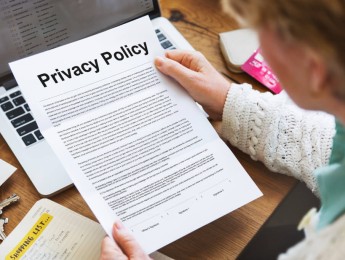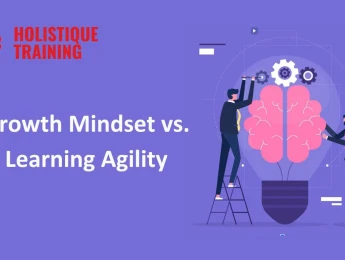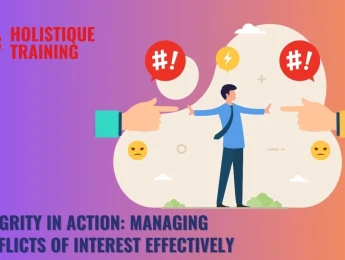Introduction
In our increasingly interconnected digital world, where data plays a pivotal role in online interactions, the concept of privacy is of utmost importance. At the heart of online privacy lies the Privacy Policy—a fundamental document that outlines how organizations handle, protect, and use personal information collected from users. Understanding the significance of Privacy Policies is essential for both individuals and businesses alike. This article aims to provide insights into the critical role of Privacy Policies by exploring what information they cover, how data is stored and protected, and why businesses need to prioritize privacy considerations. Whether you're a user navigating the complexities of online data protection or a business owner seeking to comply with regulatory requirements and build trust with your audience, this article will serve as a valuable resource to navigate the intricacies of Privacy Policies in today's digital landscape.
What is a Privacy Policy?
A Privacy Policy is a legal document or statement that outlines how a website, mobile app, or organization collects, uses, shares, and protects the personal information of its users or customers. It serves as a transparency mechanism to inform individuals about the data practices of the entity and their rights regarding their personal information. Privacy Policies are essential for establishing trust with users and complying with privacy laws and regulations. Key components typically addressed in a Privacy Policy include the types of data collected, purposes of data collection, methods of data storage and security, sharing practices with third parties, user rights, and procedures for updating or accessing personal information.
Why Do Websites Need a Privacy Policy?
Websites need a Privacy Policy for many important reasons:
- Legal Compliance: Many countries and regions have laws and regulations (such as GDPR in Europe or CCPA in California) that require websites and online services to have a Privacy Policy. Compliance with these laws is mandatory for businesses operating in those jurisdictions.
- Transparency and Trust: A Privacy Policy demonstrates transparency about how the website collects, uses, and protects user data. It builds trust with visitors by showing a commitment to respecting their privacy rights.
- Informing Users: The Privacy Policy informs users about their rights regarding their personal information, such as how they can access, update, or request deletion of their data.
- Data Collection Practices: It explains what types of data are collected from users (e.g., name, email address, browsing history), why it's collected, and how it will be used.
- Third-Party Services: Websites often use third-party tools or services (like analytics or advertising networks) that collect user data. The Privacy Policy explains these relationships and how they impact user privacy.
- Risk Management: Having a clear Privacy Policy can help mitigate legal risks and potential disputes related to privacy and data protection.
- Enhancing User Experience: Providing a Privacy Policy shows that the website values user privacy and can lead to a more positive user experience.
A Privacy Policy is essential for legal compliance, building trust with users, informing individuals about data practices, and demonstrating a commitment to protecting user privacy in accordance with applicable laws and regulations.
What Information Does the Privacy Policy Cover?
The Privacy Policy covers a range of important information related to the handling of personal data by a website, mobile app, or organization. Here are the key areas typically covered in a Privacy Policy:
- Types of Information Collected: This section describes the specific types of personal information that may be collected from users. This could include names, email addresses, phone numbers, billing information, IP addresses, device identifiers, and browsing history.
- Methods of Collection: The Privacy Policy explains how the website or app gathers information, whether through direct user input (such as filling out forms), automatic data collection (such as cookies or tracking pixels), or from third-party sources.
- Purpose of Data Collection: It outlines the reasons why the website collects personal information. This could include providing services, processing orders, improving user experience, personalizing content, conducting analytics, or marketing purposes.
- Use of Information: This section details how collected data is used by the website or app. It explains whether information is used internally, shared with third parties, or used for advertising or marketing purposes.
- Data Sharing Practices: The Privacy Policy clarifies whether personal information is shared with third parties, such as service providers, advertisers, or affiliates. It specifies the circumstances under which sharing occurs and the purposes for which data is shared.
- Data Security Measures: It outlines the security measures in place to protect user data from unauthorized access, disclosure, alteration, or destruction. This may include encryption, access controls, regular security audits, and compliance with industry standards.
- User Rights and Choices: The Privacy Policy informs users about their rights regarding their personal information. This includes the right to access, correct, or delete data, opt-out of certain data uses (such as marketing communications), and exercise privacy preferences.
- Cookies and Tracking Technologies: If applicable, the Privacy Policy explains the use of cookies, web beacons, and similar technologies for tracking user behavior and preferences. It provides information on how users can manage cookie preferences.
- Policy Updates and Notification: The Privacy Policy states how updates or changes to the policy will be communicated to users. It may include a revision history or date of last update.
- Contact Information: It provides contact details for users to reach out with questions, concerns, or requests related to privacy and data protection.
Overall, the Privacy Policy aims to be comprehensive and transparent about the handling of personal information, ensuring that users have a clear understanding of how their data is collected, used, and protected by the website or app.
How Is Information Stored and Protected?
The section of a Privacy Policy that addresses how information is stored and protected typically covers important details regarding the security measures implemented by the website, app, or organization to safeguard user data. Here are key aspects that this section may cover:
- Data Security Practices: The Privacy Policy should outline the security measures employed to protect user information. This may include technical measures such as encryption, firewalls, secure server configurations, and regular security assessments.
- Access Controls: Information about who within the organization has access to user data and the procedures in place to limit access to authorized personnel only.
- Data Minimization: The policy may explain how the organization minimizes the collection and retention of personal data to what is necessary for the specified purposes.
- Third-Party Service Providers: If personal data is shared with third-party service providers, the policy should describe the steps taken to ensure these providers maintain adequate security measures to protect the data.
- Compliance with Standards: Mention of compliance with industry standards or regulations related to data security (e.g., GDPR, CCPA) to ensure the protection of user information.
- Data Breach Notification: Information about procedures for detecting, investigating, and responding to data breaches, including notification requirements to affected users or authorities as per applicable laws.
- User Responsibilities: Any responsibilities or actions expected from users to help protect their own data security, such as choosing strong passwords or keeping their account information confidential.
- Retention and Disposal: Details on how long user data is retained and the methods used for secure disposal of data when no longer needed for the specified purposes.
- International Data Transfers: If data is transferred internationally, the Privacy Policy should mention how such transfers are safeguarded in compliance with relevant data protection laws.
- Continuous Improvement: Commitment to continuously review and improve data security practices to adapt to emerging threats and technologies.
Table 1: Key Aspects of Information Storage and Protection
Aspect | Description |
Data Security Practices | Outline of security measures like encryption, firewalls, secure server configurations, and regular assessments to protect user information. |
Access Controls | Information on who within the organization has access to user data and procedures to limit access to authorized personnel. |
Data Minimization | Explanation of how the organization minimizes collection and retention of personal data to necessary purposes. |
Third-Party Service Providers | Steps taken to ensure third-party providers maintain adequate security measures when personal data is shared. |
Compliance with Standards | Mention of adherence to industry standards or regulations (e.g., GDPR, CCPA) to ensure user information protection. |
Data Breach Notification | Procedures for detecting, investigating, and responding to data breaches, including notification to affected users or authorities. |
User Responsibilities | Expectations for user actions to protect their data security, such as using strong passwords and keeping account information confidential. |
Retention and Disposal | Details on how long user data is retained and methods for secure data disposal when no longer needed for specified purposes. |
International Data Transfers | Safeguards for international data transfers to comply with relevant data protection laws. |
Continuous Improvement | Commitment to ongoing review and enhancement of data security practices to address emerging threats and technologies. |
By addressing these aspects in the Privacy Policy, organizations demonstrate a commitment to protecting user information and fostering trust with their users. It is important for users to review this section to understand how their data is being safeguarded and what measures are in place to mitigate potential risks.
How Can Users Contact Us About Privacy Concerns?
The "Contact Us About Privacy Concerns" section of a Privacy Policy provides users with information on how they can reach out to the organization regarding privacy-related inquiries, concerns, or requests. Here are the key elements typically included in this section:
- Contact Methods: The Privacy Policy should list the various ways users can contact the organization regarding privacy concerns. This may include:
- Email address dedicated to privacy inquiries (e.g., privacy@example.com)
- Mailing address for written correspondence
- Phone number for privacy-related queries
- Point of Contact: If applicable, specify the department or individual responsible for handling privacy-related matters within the organization.
- Request Types: Inform users about the types of privacy-related requests they can make, such as:
- Requesting access to their personal data held by the organization
- Updating or correcting inaccuracies in their personal information
- Requesting deletion of their personal data (subject to legal limitations)
- Opting out of certain data processing activities (e.g., marketing communications)
- Response Time: Provide an estimated timeframe within which users can expect a response to their privacy inquiries or requests. This ensures transparency and manages user expectations.
- Additional Guidance: Offer any additional guidance or instructions for users on how to submit privacy-related inquiries or requests effectively.
- Language Accessibility: Ensure that contact information and instructions are provided in a clear and understandable manner, accessible to users of different language preferences or abilities.
- Data Subject Rights: Reiterate the user's rights under applicable data protection laws and regulations, such as GDPR or CCPA, and explain how they can exercise these rights.
- Assurance of Confidentiality: Assure users that all privacy-related inquiries or requests will be handled confidentially and in accordance with the organization's privacy practices.
By including a comprehensive "Contact Us About Privacy Concerns" section in the Privacy Policy, organizations demonstrate their commitment to addressing user privacy concerns promptly and transparently. This enhances user trust and compliance with data protection regulations.
Updates and Changes to the Privacy Policy
The section of a Privacy Policy that covers updates and changes typically explains how and when the policy may be modified, and how users will be informed about these changes. Here's what this section usually includes:
- Notification of Changes: The Privacy Policy should state that it may be updated or revised periodically. Users are typically notified of any changes to the policy.
- Method of Notification: The policy should specify how users will be informed of changes, such as through email, a notice on the website or app, or through other means of communication.
- Frequency of Updates: Information on how frequently the Privacy Policy may be updated, whether regularly scheduled (e.g., annually) or as needed to comply with new laws or changes in data practices.
- Effective Date of Changes: Clarification that any changes to the Privacy Policy will take effect immediately upon publication of the revised policy, unless otherwise specified.
- User Consent: Mention of whether user consent is required for changes to the Privacy Policy, particularly if the changes materially affect the way personal information is handled.
- Access to Previous Versions: Assurance that users can access previous versions of the Privacy Policy for reference or comparison.
- Reviewing Changes: Encouragement for users to regularly review the Privacy Policy for updates and changes.
- Opt-Out Option: If allowed by applicable laws, providing information on how users can opt-out or discontinue use of the service if they do not agree with the updated Privacy Policy.
- Contact Information for Inquiries: Reiteration of contact details for users to reach out with questions or concerns about the Privacy Policy changes.
Table 2: Key Aspects of Privacy Policy Updates
Aspect | Description |
Notification of Changes | Statement that the Privacy Policy may be updated periodically, with users notified of any revisions to the policy. |
Method of Notification | Specification of how users will be informed of changes, such as through email, website/app notice, or other communication channels. |
Frequency of Updates | Information on how often the Privacy Policy is updated, whether on a regular schedule (e.g., annually) or in response to new laws or data practices. |
Effective Date of Changes | Clarification that changes to the Privacy Policy take effect immediately upon publication of the revised policy, unless otherwise specified. |
User Consent | Indication of whether user consent is required for changes, especially if they materially impact how personal information is handled. |
Access to Previous Versions | Assurance that users can access prior versions of the Privacy Policy for reference or comparison purposes. |
Reviewing Changes | Encouragement for users to regularly review the Privacy Policy to stay informed about updates and changes. |
Opt-Out Option | Information on how users can opt-out or discontinue use of the service if they disagree with the updated Privacy Policy, as permitted by applicable laws. |
Contact Information | Reiteration of contact details for users to address questions or concerns regarding changes to the Privacy Policy. |
It's important for organizations to clearly communicate any updates to their Privacy Policy to ensure transparency and maintain trust with users. Users should be informed about how and when changes occur and have the opportunity to review and understand the updated terms.
Conclusion
In conclusion, Privacy Policies stand as a cornerstone in the realm of online privacy and data protection. They serve as a bridge of transparency between organizations and users, outlining the responsibilities and practices governing the collection, use, and safeguarding of personal information. By comprehensively covering the types of information collected, data storage practices, security measures, and avenues for user inquiries, Privacy Policies empower individuals to make informed choices about their online interactions. For businesses, adhering to robust privacy practices not only ensures legal compliance but also fosters trust and credibility among customers. As we continue to navigate the digital landscape, embracing the principles of privacy and accountability articulated in Privacy Policies is essential for promoting a safe and trustworthy online ecosystem where privacy rights are respected and upheld.

























